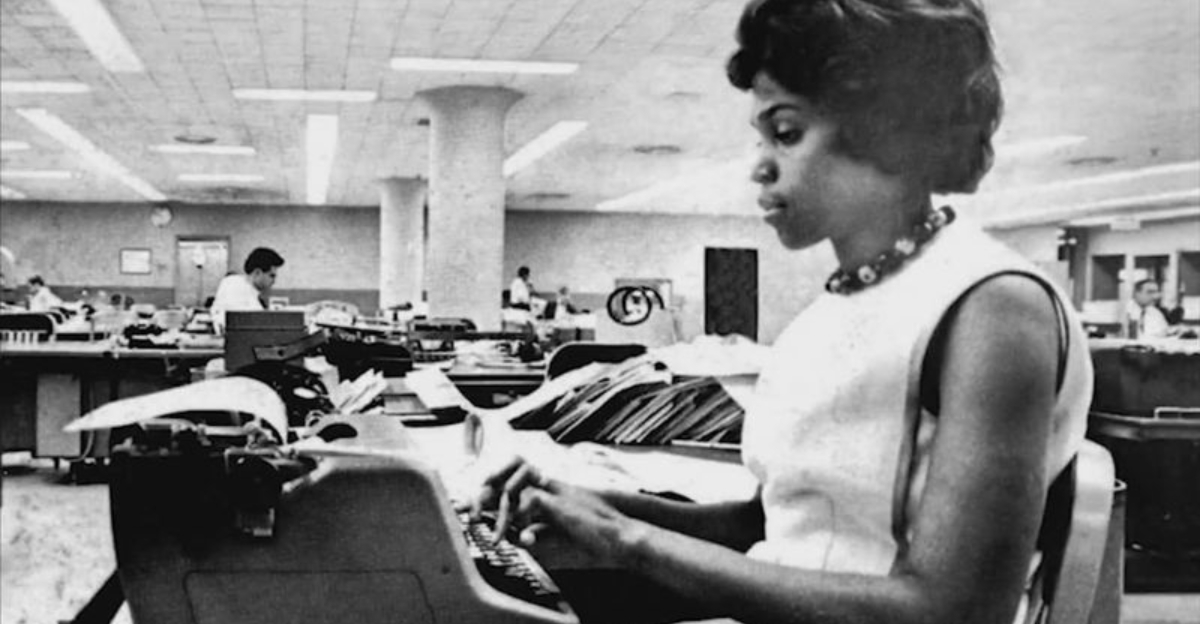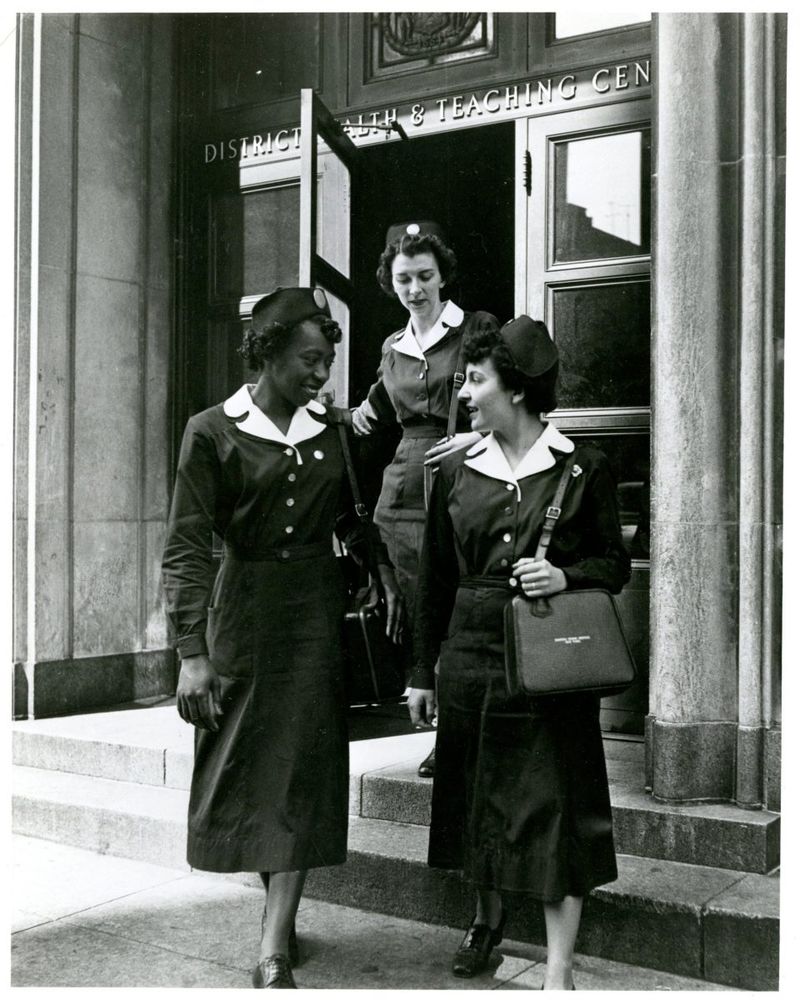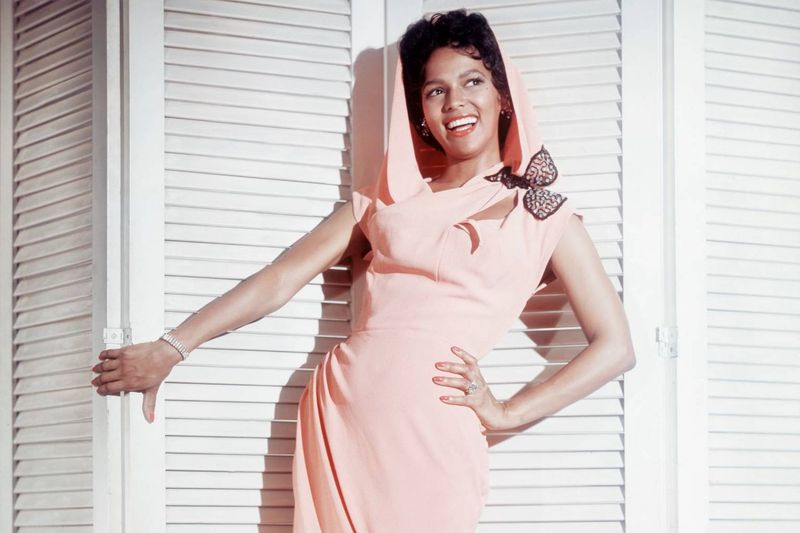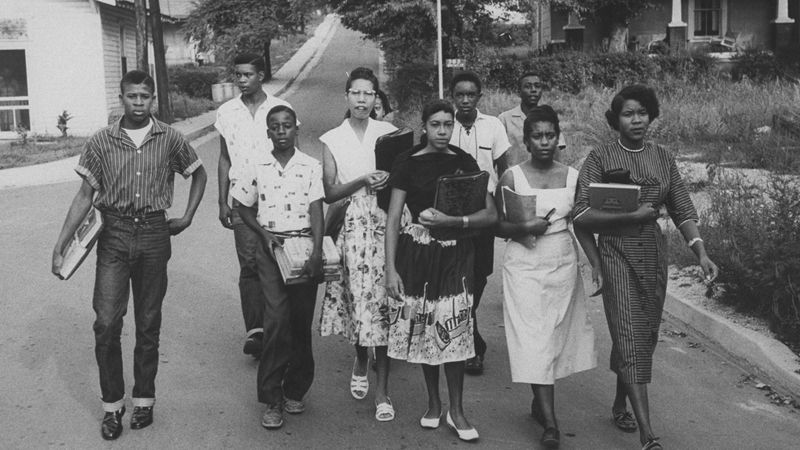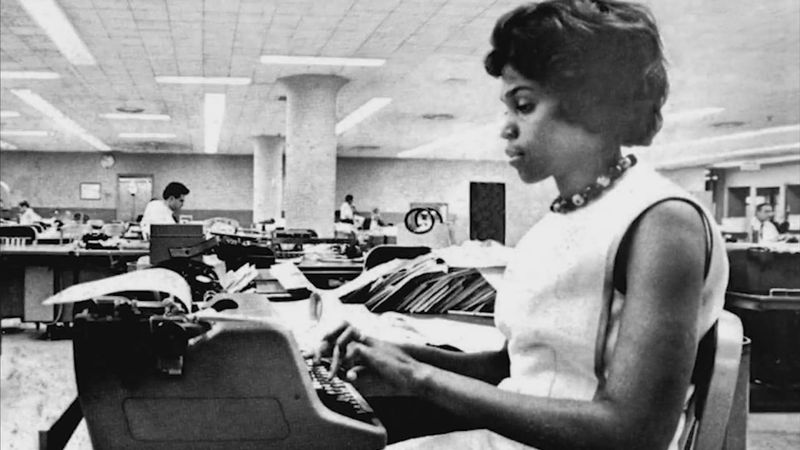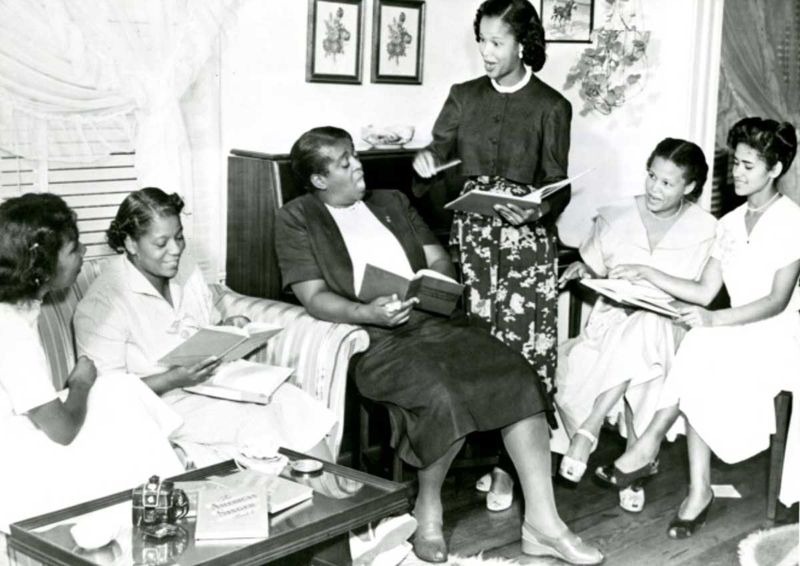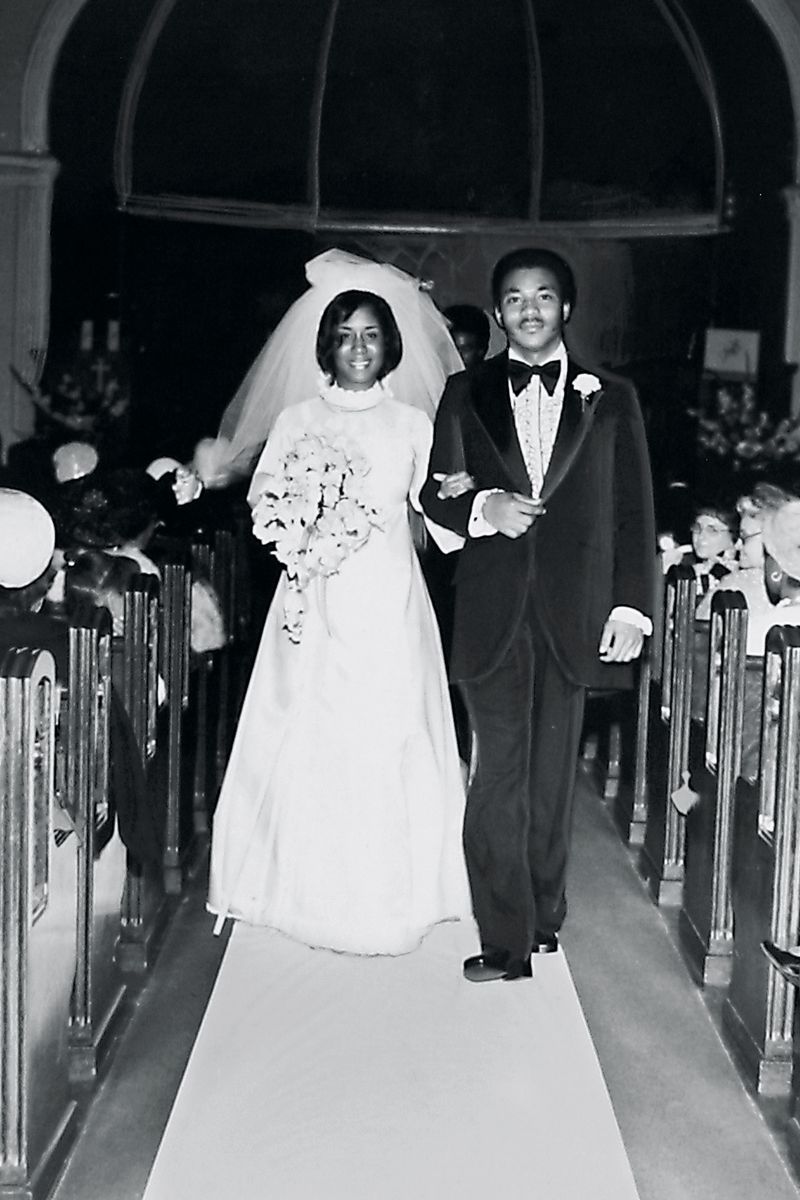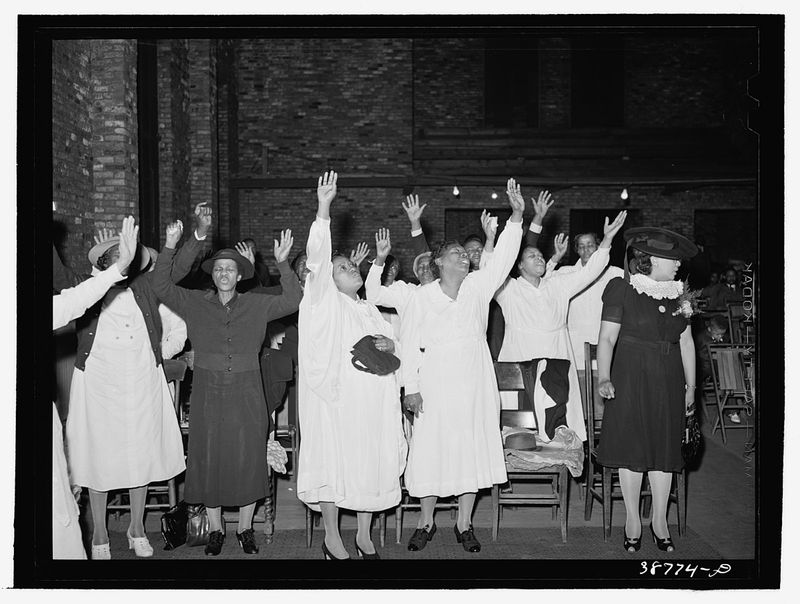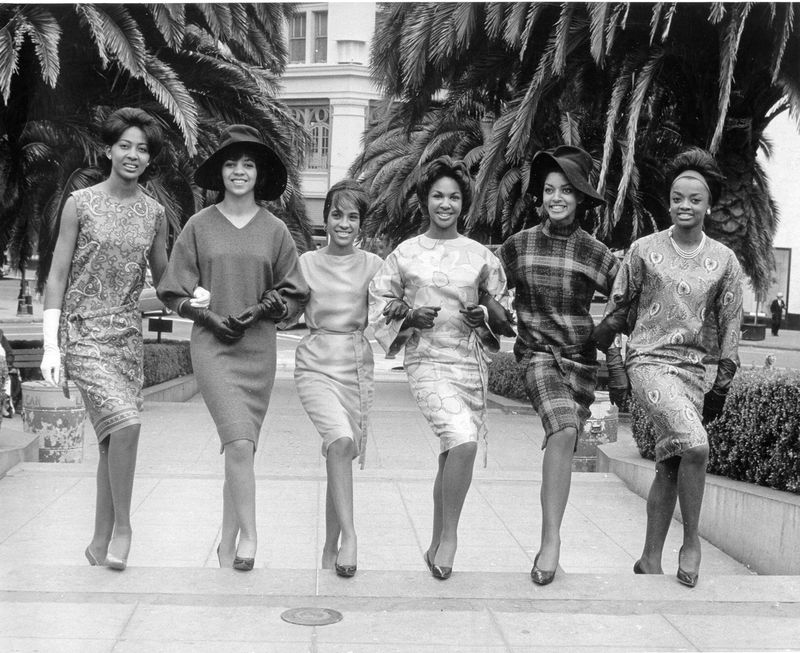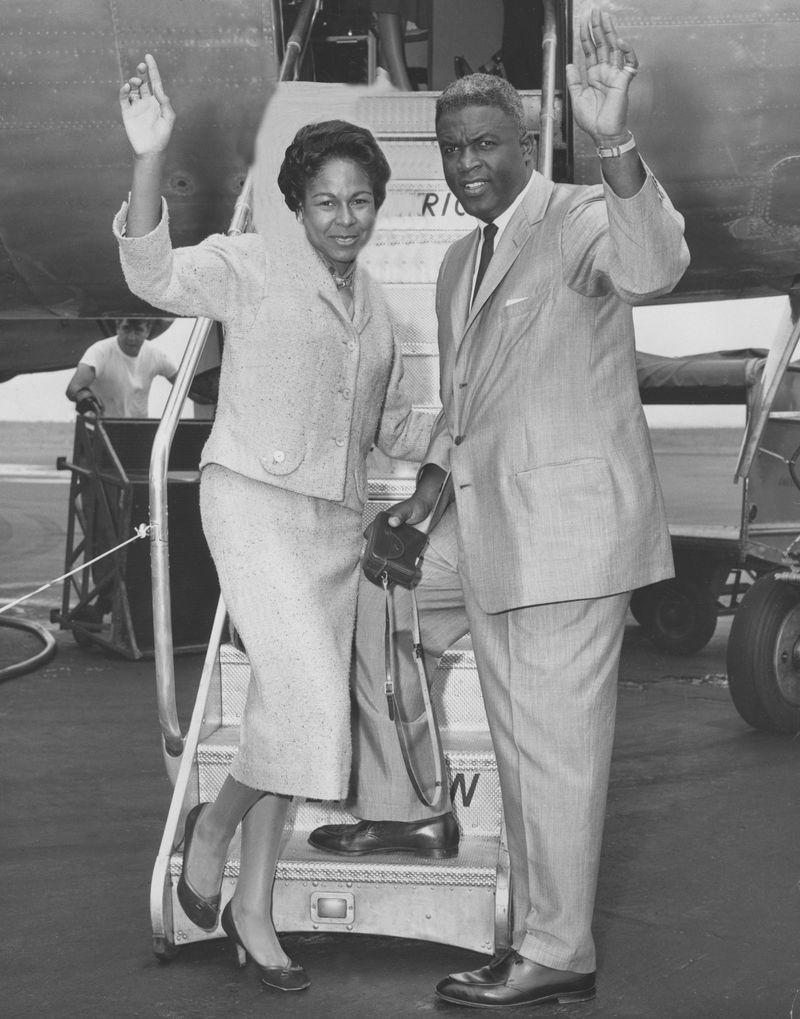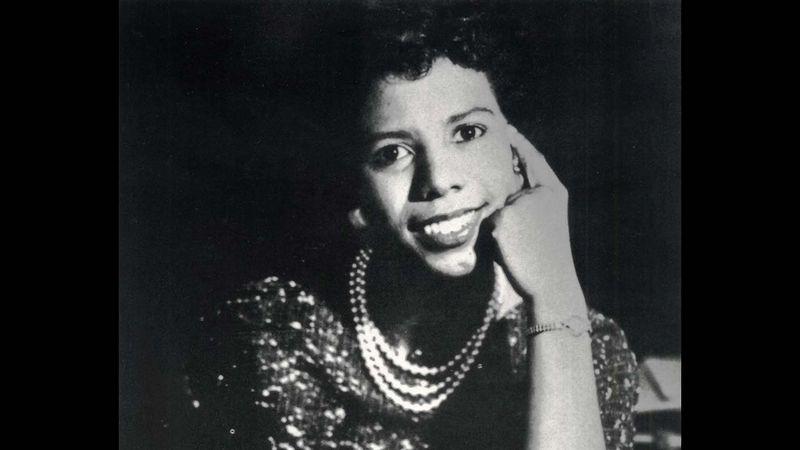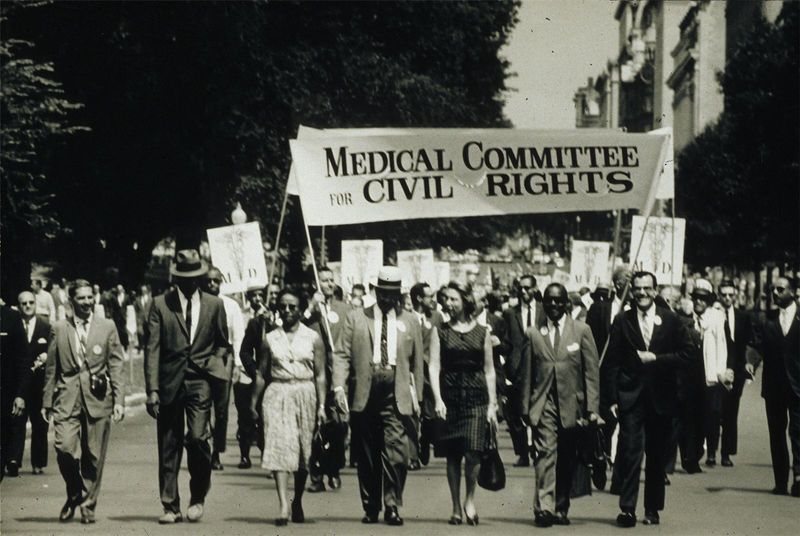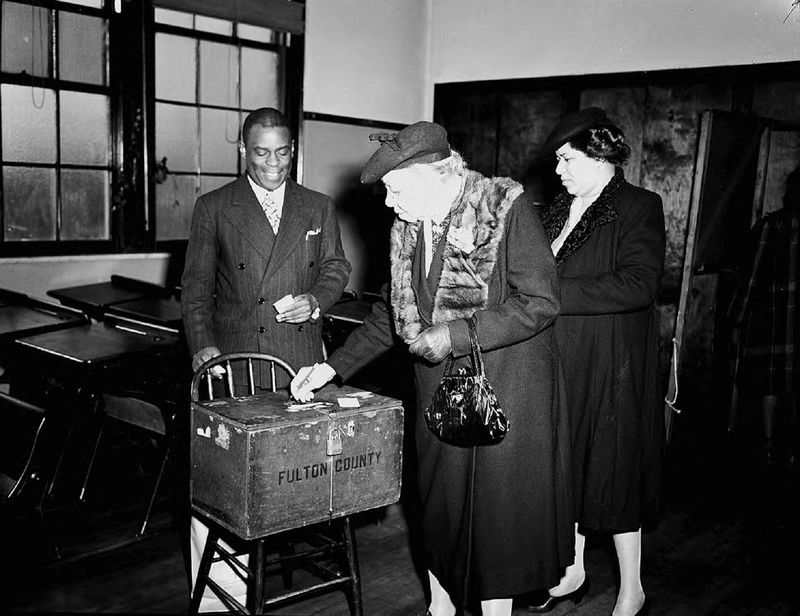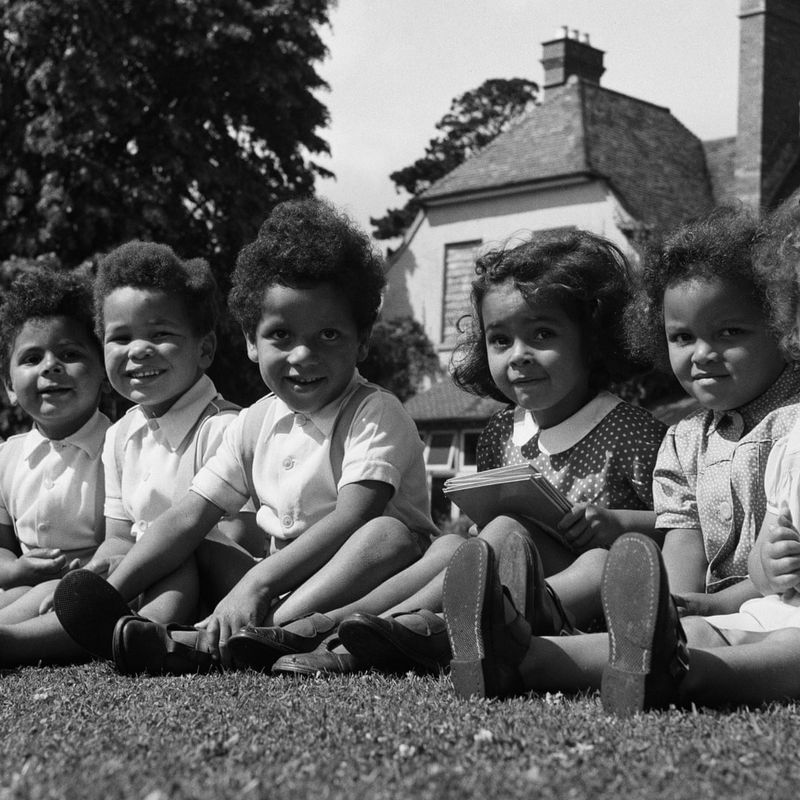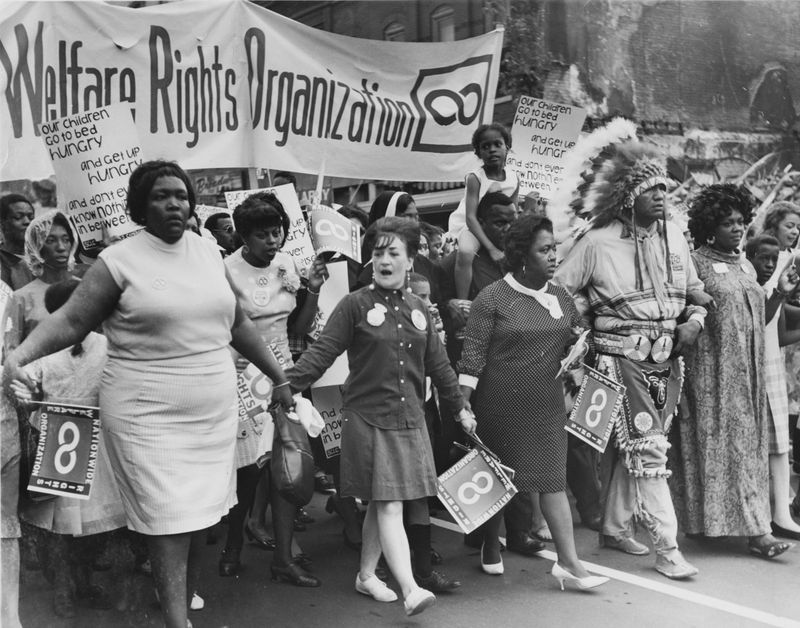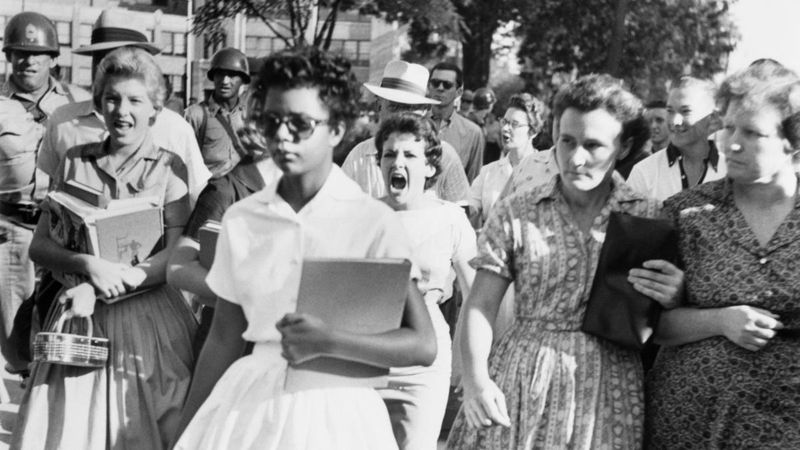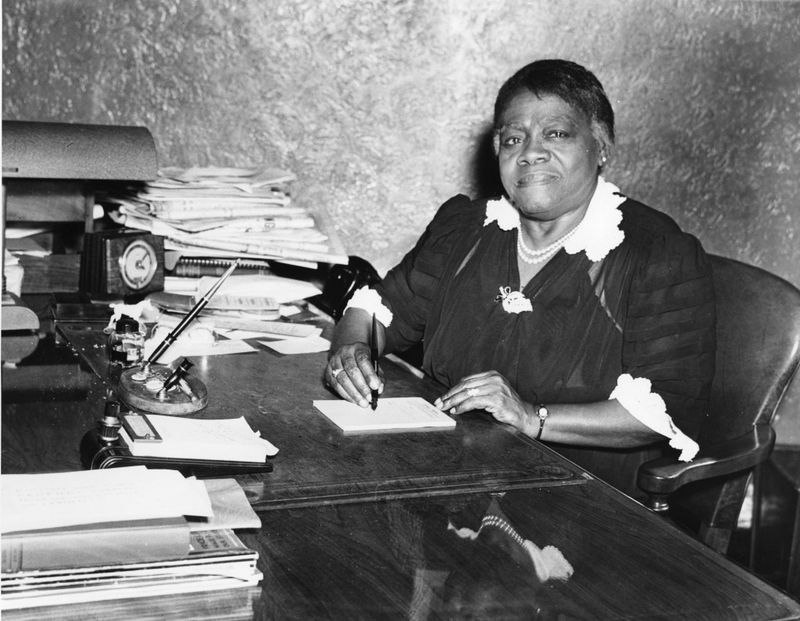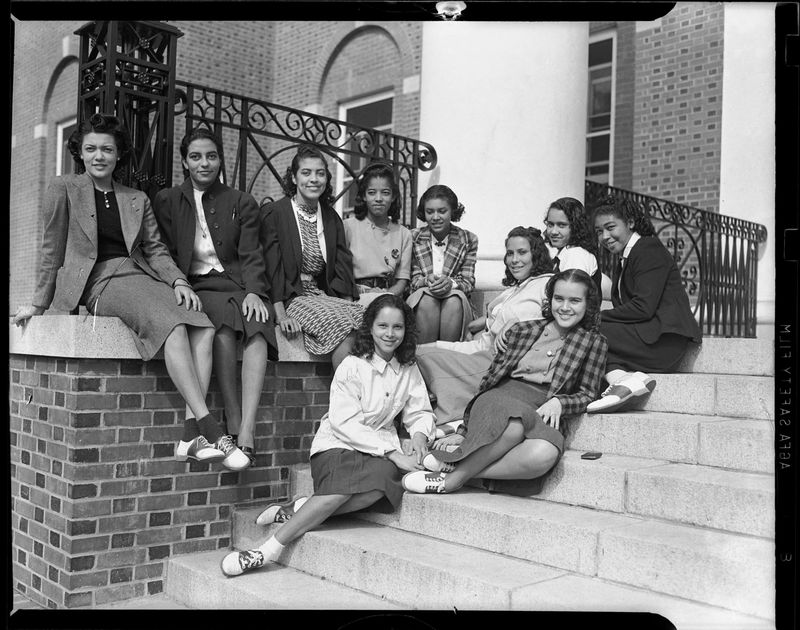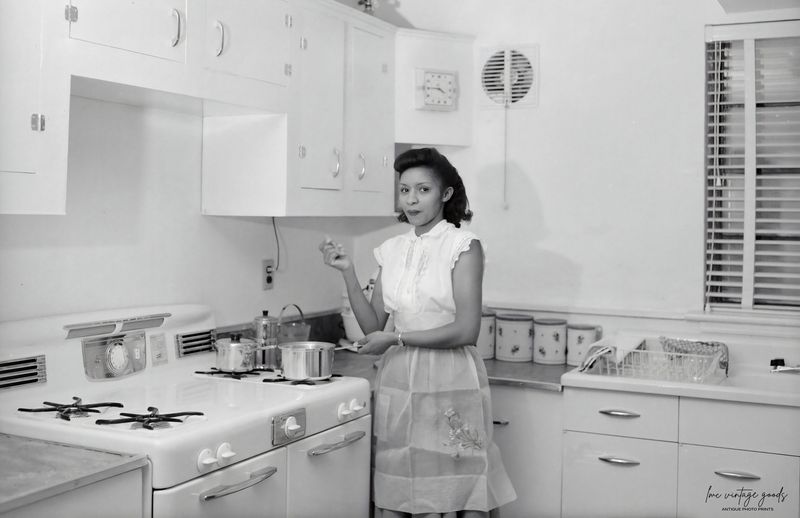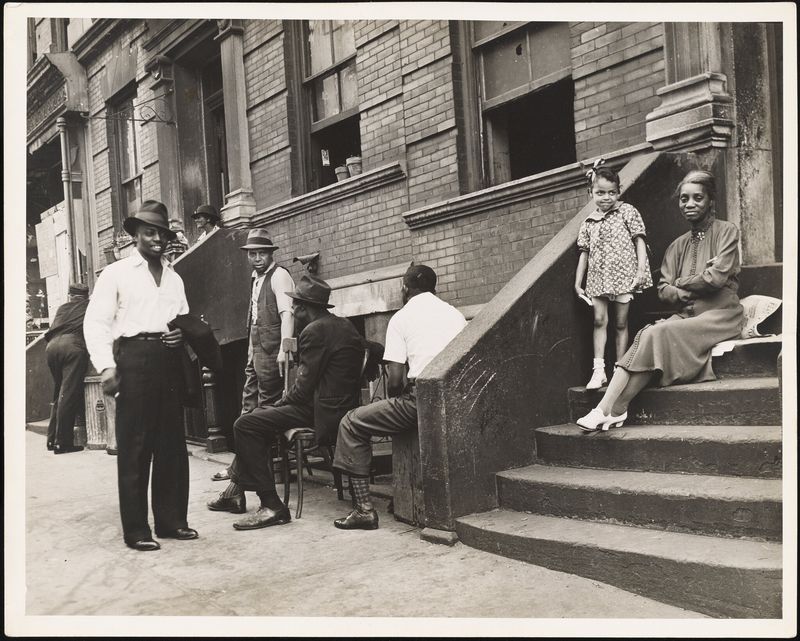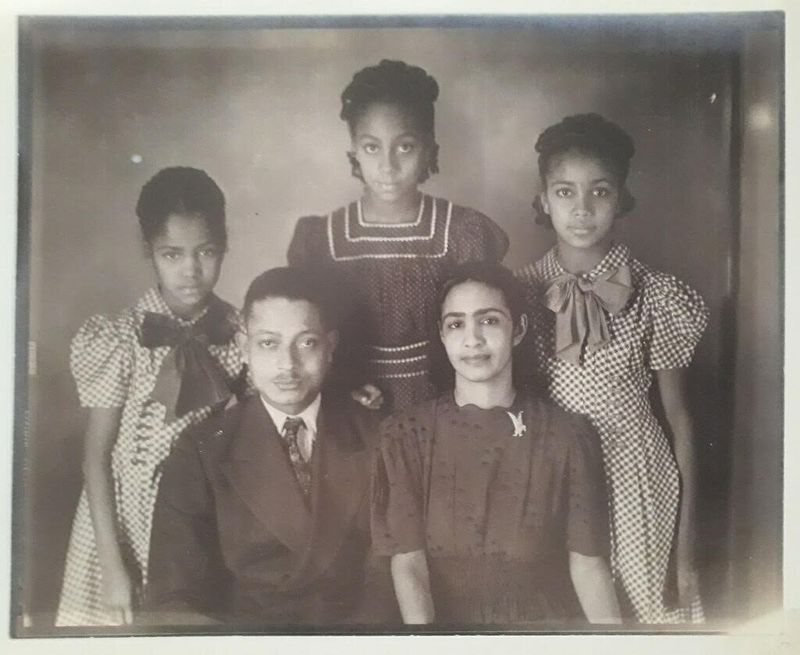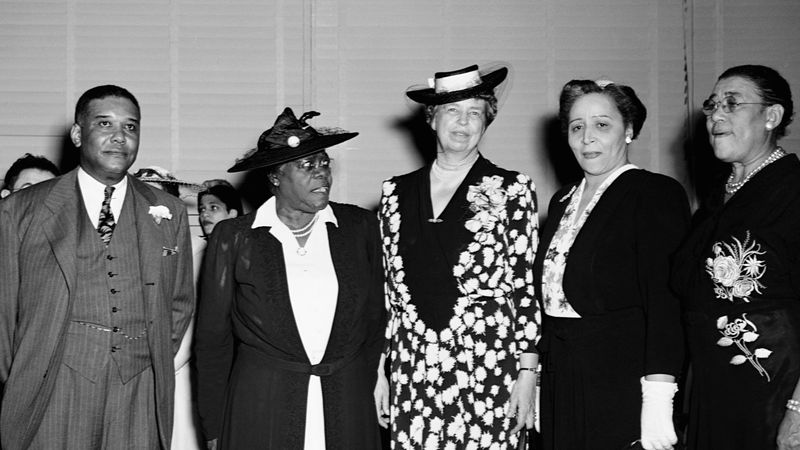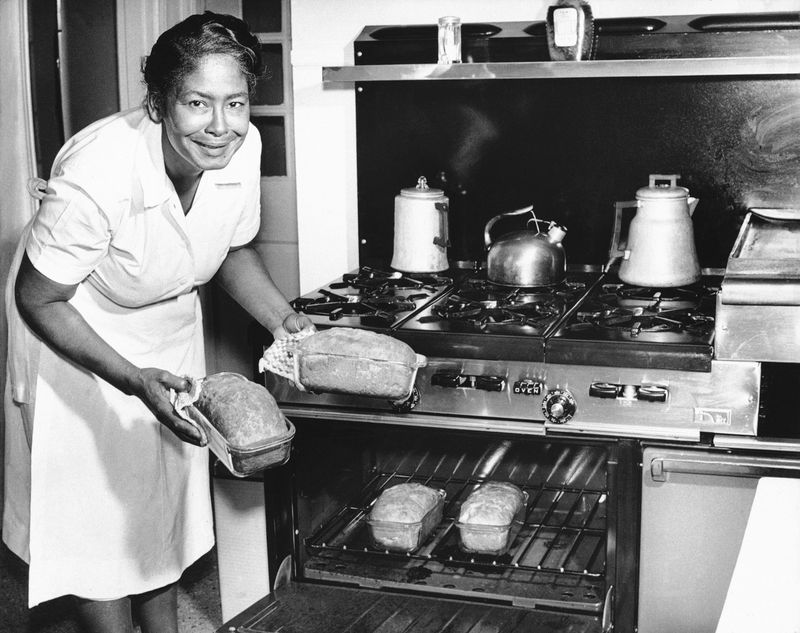The 1950s was a decade marked by strict societal norms, and for Black women, these norms were often compounded by racial discrimination.
The rules they had to follow were not just reflective of the gender biases of the time but also the harsh realities of segregation and racism.
This article uncovers 23 shocking rules that governed the lives of Black women during this era, shedding light on their resilience and strength in the face of adversity.
From fashion to employment, these rules illustrate a world where their choices were severely restricted yet their spirit remained unbroken.
1. Dress Codes at Work
In the 1950s, Black women faced strict dress codes at work, often having to adhere to conservative attire deemed “appropriate” by predominantly white employers. This typically meant modest skirts and blouses devoid of vibrant colors or patterns.
The intention was to ensure they appeared ‘professional,’ a term often used to enforce conformity and suppress individuality. Such dress codes were not merely about style but were embedded in a broader context of racial and gender discrimination.
For many, this meant investing in a separate work wardrobe that conformed to the segregated work environment norms.
2. Segregated Beauty Standards
Beauty standards in the 1950s were heavily skewed towards white ideals, making it challenging for Black women to find products that catered to their needs. Salons were often segregated, limiting access to services.
Black women had to navigate a beauty industry that frequently ignored their existence, forcing them to resort to homemade remedies and community-based resources. This systemic exclusion also meant fewer opportunities for Black beauticians within the mainstream industry.
Despite these barriers, Black women embraced their unique beauty and created supportive networks that celebrated their culture and identity.
3. Education Barriers
Education was a battleground for equality in the 1950s, with Black women facing numerous obstacles to accessing quality education. Segregated schools often meant inferior resources and facilities compared to their white counterparts.
Despite these challenges, many Black women pursued higher education, driven by the desire to uplift their communities and break the cycle of poverty. Their perseverance led to gradual changes, yet the struggle for equal educational opportunities was far from over.
These barriers underscored the resilience and determination of Black women who valued education as a powerful tool for change.
4. Limited Employment Opportunities
The 1950s workforce presented limited opportunities for Black women, who were often relegated to low-paying domestic or service roles. Options were scarce beyond the confines of domestic work, reflecting broader racial and gender biases.
This employment landscape restricted financial independence and professional growth. Yet, Black women worked tirelessly to support their families, often juggling multiple jobs.
Despite systemic barriers, they laid the groundwork for future generations, challenging stereotypes and advocating for fair labor practices. Their contributions, though often overlooked, were invaluable to the economic fabric of the time.
5. Restricted Social Spaces
Social spaces in the 1950s were largely segregated, greatly limiting where Black women could gather and socialize. Parks, restaurants, and theaters were often designated for white patrons only, with separate and unequal facilities for Black communities.
This segregation extended to leisure activities, dictating not only where Black women could go but also how they could enjoy their time.
Despite these restrictions, Black women created their own vibrant social scenes within their communities, fostering a sense of belonging and cultural pride. These gatherings were crucial for community building and shared resilience.
6. Marriage Expectations
Marriage in the 1950s carried specific expectations for Black women, who were encouraged to embody traditional domestic roles. This often meant prioritizing homemaking over personal ambitions or professional pursuits.
The societal pressure to marry and conform was intense, compounded by racial stereotypes that sought to undermine Black family structures.
Nevertheless, many Black women navigated these expectations by creating supportive partnerships and maintaining strong family ties. They balanced the demands of marriage with their own aspirations, redefining what it meant to be a wife and mother in a changing world.
7. Strict Church Roles
Churches were central to community life for Black women in the 1950s, yet their roles within these institutions were often restricted. Leadership positions were typically reserved for men, limiting women’s influence on church policies and activities.
Despite these constraints, Black women found ways to lead and inspire, often taking charge of choirs and organizing community outreach programs.
Their contributions were vital to the spiritual and social fabric of their communities, reflecting both their deep faith and resilience in the face of gendered expectations. These efforts laid the groundwork for future generations of female church leaders.
8. Fashion Limitations
Fashion in the 1950s reflected the social norms of the era, and Black women often faced scrutiny for their clothing choices. Bright, expressive attire was sometimes viewed as inappropriate or unprofessional in a racially biased society.
Many Black women used fashion as a form of self-expression and resistance, embracing styles that celebrated their culture and identity.
While societal pressures demanded conformity, the vibrant fashion choices of Black women of the time were a testament to their creativity and defiance. They set trends that influenced the broader culture, challenging stereotypes and showcasing individuality.
9. Travel Restrictions
Travel in the 1950s was fraught with challenges for Black women, who faced segregation in public transportation and accommodations. The infamous Jim Crow laws dictated where they could sit, eat, and sleep during their journeys.
Despite these oppressive restrictions, Black women traveled for work, family, and education, navigating a landscape designed to limit their freedom.
The Green Book, a guide for Black travelers, became an essential tool for safe passage, highlighting the resilience and resourcefulness of those who dared to explore beyond the confines of segregation. Travel was not just about movement but a statement of defiance.
10. Media Representation
The media landscape of the 1950s largely ignored Black women, offering few positive or realistic portrayals. Magazines, television, and films often relegated them to stereotypical roles, if they were represented at all.
This lack of visibility perpetuated harmful stereotypes and denied young Black women role models who reflected their experiences and aspirations.
In response, Black women began to create their own media outlets, fostering a sense of pride and community. This era marked the beginning of a cultural shift, laying the groundwork for future generations to demand and create more authentic representation in the media.
11. Healthcare Inequities
Healthcare disparities were stark in the 1950s, with Black women receiving inadequate medical attention due to systemic racism. Segregated hospitals and clinics meant limited access to quality care and facilities.
Black nurses and healthcare professionals were often confined to separate wards, reflecting broader societal discrimination. Despite these challenges, they provided essential services to their communities, often going above and beyond their official duties.
The inequities faced by Black women in healthcare underscored the urgent need for reform and the importance of advocating for equitable treatment in medical institutions.
12. Political Exclusion
The 1950s were a critical period for civil rights, yet Black women were often excluded from political processes. Voter suppression tactics and discriminatory laws disenfranchised many, denying them a voice in shaping their futures.
Despite these barriers, Black women were at the forefront of civil rights activism, organizing protests and advocating for change. Their efforts were instrumental in challenging unjust laws and paving the way for future generations.
This political exclusion highlighted both the resilience and determination of those who fought tirelessly for equality and justice, demanding a seat at the table.
13. Childcare Challenges
Childcare was a significant challenge for Black women in the 1950s, many of whom worked long hours in demanding jobs. Limited access to affordable childcare services added to their burden, forcing them to rely on informal networks.
Family and community support became essential in raising children, often filling the gaps left by systemic neglect. This reliance on communal care fostered strong bonds and a collective sense of responsibility.
Despite these difficulties, Black women demonstrated remarkable resilience, ensuring their children were cared for and educated, laying the foundation for future success.
14. Civic Engagement Restrictions
Civic engagement opportunities for Black women in the 1950s were severely restricted by societal norms and racial discrimination. Many organizations excluded them from membership or leadership roles.
Despite these barriers, Black women found ways to engage in community activism, often forming their own groups to address pressing social issues.
Their efforts were instrumental in mobilizing communities, advocating for civil rights, and challenging injustices. These grassroots movements laid the groundwork for broader societal changes, highlighting the crucial role of Black women in the fight for justice and equality.
15. Higher Education Hurdles
Pursuing higher education in the 1950s posed significant challenges for Black women, who faced both racial and gender-based barriers. Limited access to scholarships and resources further hindered their academic pursuits.
Despite these obstacles, many Black women excelled academically, attending historically Black colleges and universities that provided supportive environments.
Their achievements were a testament to their resilience and determination, breaking down barriers and paving the way for future generations. The pursuit of education became a means of empowerment, challenging societal norms and opening doors to new opportunities.
16. Cultural Expression Limits
Cultural expression for Black women in the 1950s was often limited by societal norms that undervalued their heritage. Opportunities to celebrate their culture publicly were scarce, restricted by segregation and discrimination.
Despite these limitations, Black women found ways to express their rich cultural traditions through music, dance, and art within their communities.
These expressions were acts of resistance, celebrating identity and fostering cultural pride. They played a crucial role in preserving traditions and inspiring future generations to embrace their heritage, challenging stereotypes and enriching the broader cultural landscape.
17. Public Demeanor Expectations
Public demeanor for Black women in the 1950s was subject to scrutiny, with societal expectations dictating how they should present themselves. Politeness and composure were often enforced, reflecting deeper racial and gender biases.
This pressure to conform to a “respectable” image was a strategy to navigate a world that was often hostile and discriminatory.
Despite these external pressures, Black women maintained their dignity and self-respect, embodying strength and resilience. Their public demeanor became a powerful statement of their humanity and defiance in the face of systemic oppression.
18. Household Management Expectations
Household management in the 1950s was often seen as the primary domain of Black women, who were expected to maintain their homes while supporting their families. This role required juggling multiple responsibilities, often without modern conveniences.
Despite these challenges, Black women demonstrated remarkable ingenuity and resourcefulness, creating nurturing environments for their families.
Their efforts were vital to the stability and well-being of their households, showcasing their strength and resilience. By managing their homes with care and dedication, they laid the foundation for family success and future prosperity.
19. Neighborhood Segregation
Neighborhood segregation in the 1950s limited housing options for Black women, confining them to specific areas with fewer resources and opportunities. These neighborhoods were often subject to neglect and discrimination.
Despite these conditions, Black women worked tirelessly to build strong, vibrant communities, fostering solidarity and mutual support.
Their efforts were crucial in creating safe and nurturing environments for families, resisting the systemic forces that sought to marginalize them. By investing in their neighborhoods, Black women played a vital role in shaping community identity and resilience.
20. Parental Role Expectations
Parental roles in the 1950s were heavily influenced by traditional expectations, with Black women often seen as the primary caregivers and nurturers. This role came with immense responsibility, balancing work and family duties.
Despite these demands, Black women embraced their roles, providing love, guidance, and education to their children. Their dedication ensured that the next generation was equipped to face the challenges of a rapidly changing world.
By nurturing strong family bonds and instilling values of resilience and perseverance, Black women laid the groundwork for future success.
21. Community Leadership Limitations
Community leadership opportunities for Black women in the 1950s were limited by societal norms that often excluded them from decision-making roles. Despite these barriers, many stepped up as leaders in their communities, organizing events and advocating for change.
Their leadership was instrumental in addressing social issues, fostering community solidarity, and inspiring future generations.
By challenging traditional gender roles and advocating for justice, Black women played a pivotal role in shaping the social and political landscape. Their contributions were a testament to their strength and determination to create a better future.
22. Traditional Cooking Practices
Cooking in the 1950s was often centered around traditional practices, with Black women preserving family recipes that reflected their rich cultural heritage. These meals were expressions of love and care, nourishing both body and spirit.
Despite limited resources, Black women showcased remarkable creativity in the kitchen, using available ingredients to create delicious and nutritious meals.
Their culinary skills were a source of pride and community connection, passing down traditions that enriched family life and cultural identity. Through cooking, they celebrated their heritage and contributed to the vibrant tapestry of American cuisine.
